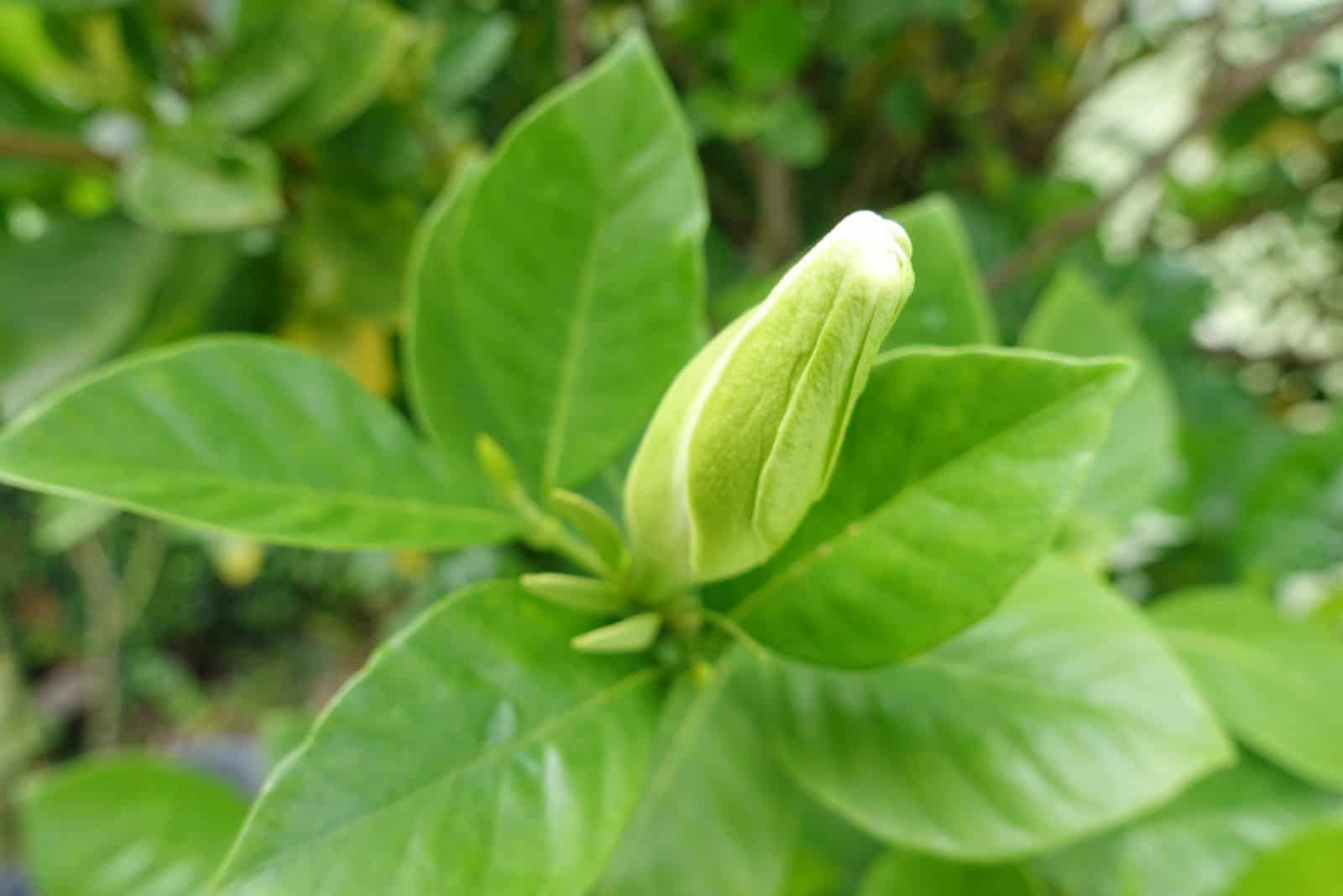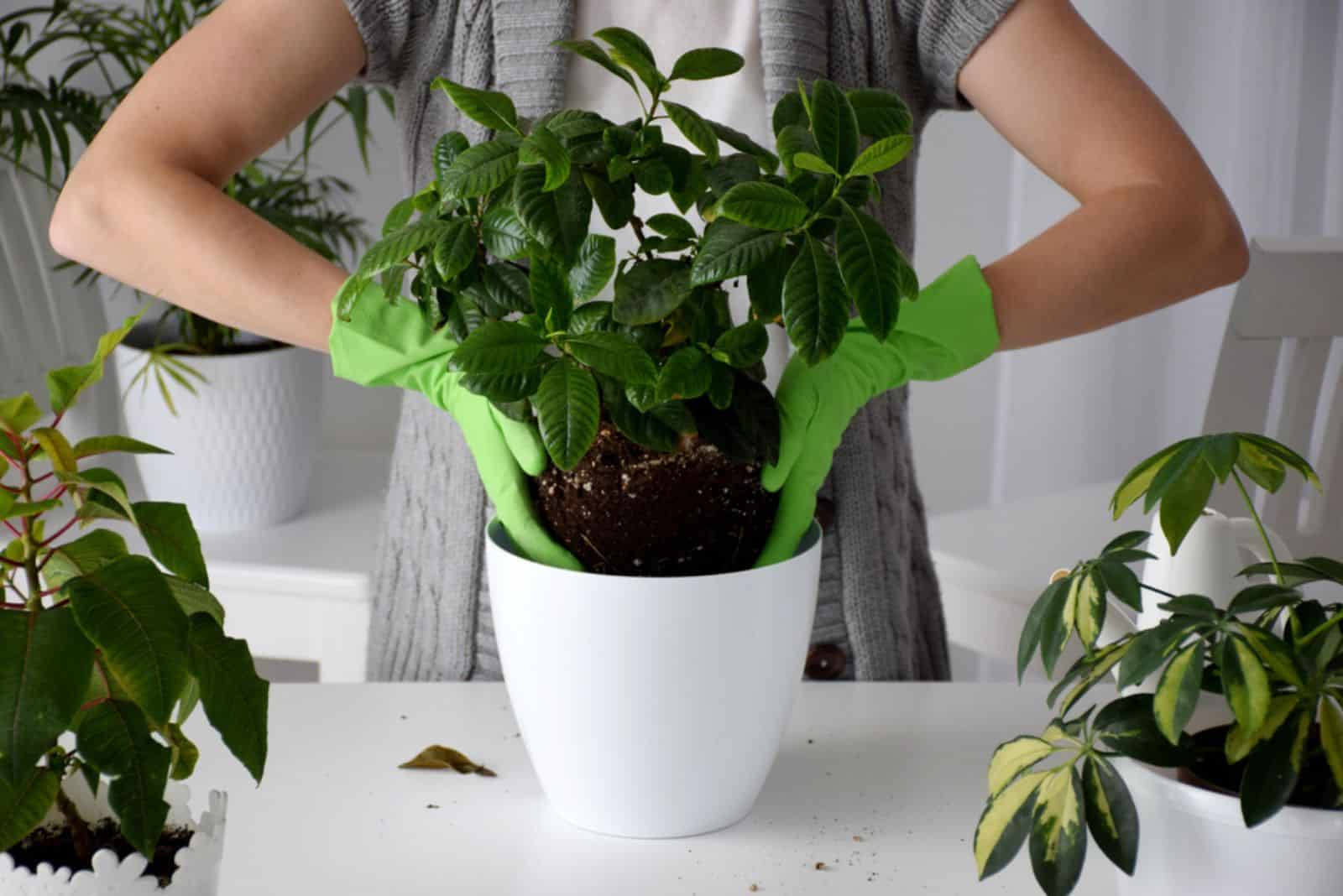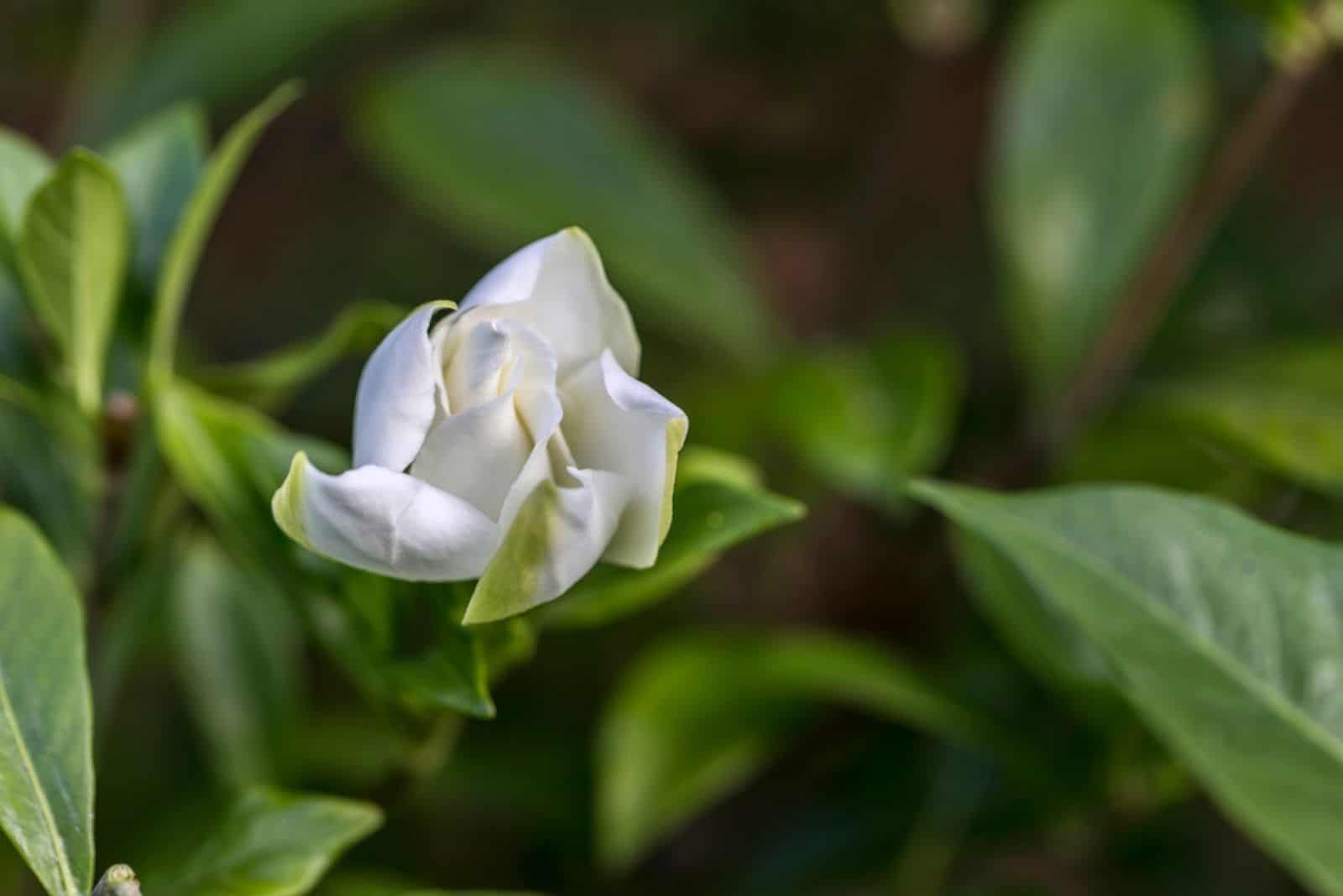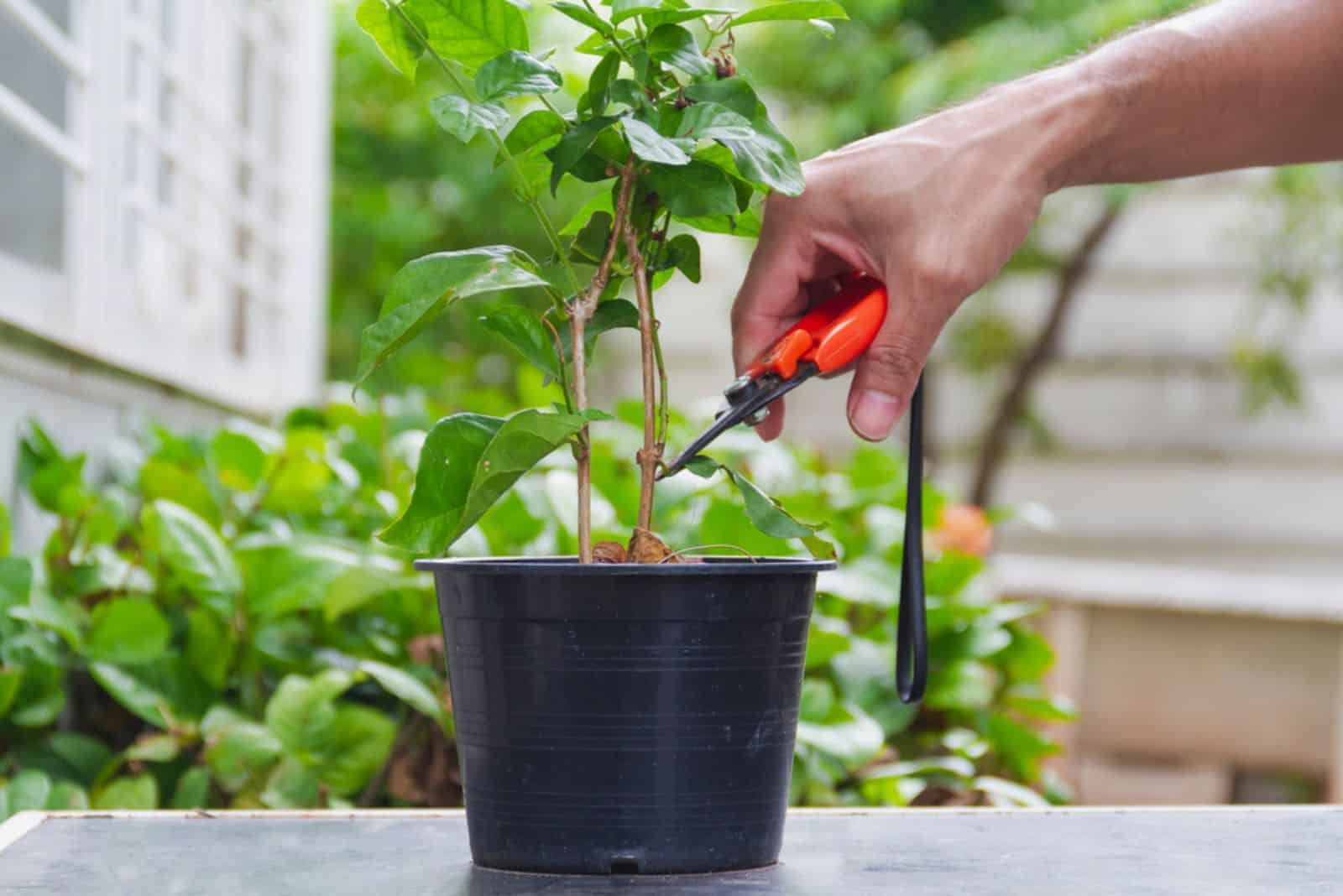Few things can compare with a gardenia when it reveals its floral splendor! But anyone who grows this wonderful plant knows how temperamental it can be.
It’s pretty fussy over growing conditions and it’s not uncommon for a gardenia to not produce flowers.
If your gardenia isn’t blooming, there are a few possible causes all related to incorrect growing conditions. I’ll go through each and show you how to fix this problem so you can awaken your plant from its slumber!
1. Not Enough Or Too Much Sunlight
Three things are essential to a happy and healthy gardenia: bright light, lower temperatures, and high humidity. This doesn’t seem like something hard to accomplish but when we see the big picture, things are different.
A lot of bright light typically comes with warmer temperatures, and humidity isn’t high enough in most cases. Keeping these three elements balanced is not an easy task.
If you’re wondering how store-bought gardenias are always in bloom, the only reason is that manufacturers can provide them with tropical conditions by growing them in greenhouses.
You need to ensure approximately 4-6 hours of direct sunlight for your gardenia. However, avoid exposing this plant to direct sun in the middle of the day because sun rays are too harsh and could damage the plant.
Aim for mild morning sun and ensure some shade during the warmest parts of the day. Never keep this plant in full shade as it will inhibit flower production.
Another thing to pay attention to is the time gardenias spend in complete darkness. You need to make sure that it spends 12 hours in complete darkness because that’s the only way to encourage it to generate flower buds.
This means that you should never plant it near light sources (porch lights or flood lights).
The easiest solution would be to relocate your gardenia, but the problem is that it doesn’t like when its roots are disturbed. You’ll need to wait until fall to transfer your gardenia to a new spot.
2. Inadequate Temperatures
These plants are hardy in USDA zones 8 through 12, and the best way to make them happy is by mimicking conditions found in their natural habitat (tropical regions of Asia, Australia, and Africa).
When gardenias receive too much sun and temperatures are high, they generate flower buds that turn brown and fall off before they open.
The ideal temperature range for gardenia plants is from 70 to 75 degrees Fahrenheit during the day and around 50 degrees during the night.
As you can see, gardenias are high-maintenance plants, which is why many gardeners stay away from them.
3. Soil Isn’t Acidic
Gardenias thrive in acidic soil types. The ideal pH for these plants is between 5.0 and 6.0, and anything lower or higher will lead to fewer blooms.
I highly recommend performing a soil test before planting your gardenias. This is not a cheap plant so it’s better to start fixing and adjusting conditions before planting.
The good news is that you can amend the soil with some ingredients to make it more acidic. If the soil tests show that pH isn’t suitable, add compost, pine needles, straw, or ground bark to the soil.
4. Soil Lacks Nutrients
Another possible reason your gardenia isn’t blooming is a lack of nutrients in the growing medium.
The soil must be full of nutrients, so you’ll most likely need to amend it before planting your gardenia.
The best materials you can add to gardenia soil are compost and well-rotted manure. Bear in mind that you’ll need to add these materials each season because your gardenia will use them all up in one growing season.
You should also add fertilizer monthly starting in March and finishing in the late season, i.e., August.
When purchasing fertilizers, you can go with those used for acid-loving plants, such as Rhododendrons and camellias.
Feeding your gardenia in the late season can lead to new growth, but the problem is that it won’t survive low temperatures. These plants enter dormancy in the fall and they don’t require food during this period.
Pay attention to how you prepare fertilizer; always follow the instructions on the label because if you use too much fertilizer it can lead to root burn.
5. Not Enough Or Too Much Moisture
Inadequate soil moisture can also lead to a gardenia not blooming. This refers to both high and low moisture content in the growing medium.
If the soil is too dry, the flower buds will fall off because the plant tries to conserve water to survive.
Too much moisture in the soil caused by poorly-draining soil can lead to root rot in gardenias, which is even more dangerous than dehydration. Your gardenia will lack blossoms and its life will be in danger.
You should water your gardenia when the upper part of the soil dries out, but it’s important to pay attention to the amount of water you add to the soil. You need to give your gardenia a good soak each time you water and always allow excess water to drain.
Drip irrigation could fix the problem with moisture, but this system doesn’t work for gardenias. The plant will develop shallow roots over time, which means the plant parts above the soil line won’t have enough nutrients.
When irrigating, never pour water over the gardenia leaves because they can rot.
From my experience, mulch is the most effective way to retain moisture in the soil. A layer of mulch will also keep the soil cool and if you use pine needles or bark as mulch, you’ll increase acidity.
6. Pest Infestation
If you ask any gardenia parent to tell you how to keep this plant happy, they’ll definitely tell you to keep it pest-free!
Gardenias attract various pests, and infestation can prevent them from blooming and generating new growth.
Whiteflies, thrips, aphids, and spider mites adore gardenia leaves and as soon as they enter your garden, their main target will be this particular plant.
The best cure for these nuisances is to inspect your gardenia leaves and stems regularly. This will allow you to get rid of them instantly; simply remove them using your hands.
If the population is already high, you can use other pest control methods to remove them. Don’t use chemical products to get rid of pests, especially if you grow your gardenia outdoors.
They can severely damage your plant and repel beneficial pollinators.
Neem oil is one of the best ways to remove pests from gardenia plants. Simply prepare the solution according to the instructions and apply it a few times until all pests are gone.
7. Pruning Timing Is Wrong
This plant will benefit from light pruning because it encourages it to generate more branches and retain its compact shape.
But you need to be careful and choose the right time to prune it. Gardenias will perform best if pruned at the beginning of the summer after they produce the first set of blossoms.
If you prune too early you can accidentally remove freshly formed buds, so it’s better to wait until buds open and blossoms fade.
Of course, you can remove spent blooms at any time, but wait to prune stems and branches until after every flower fades.
Some varieties produce flowers twice in the same season so if you have one of these, make sure to prune after the second blossoming.
Gardenias are true divas of the garden, and you now know how hard it can be to make them happy. You’ll really need to devote a lot of time and energy if you decide on growing these spectacular plants, but in my opinion, it’s worth it! The tips above will help you master the art of keeping gardenias satisfied and blooming.
Happy growing and until next time





